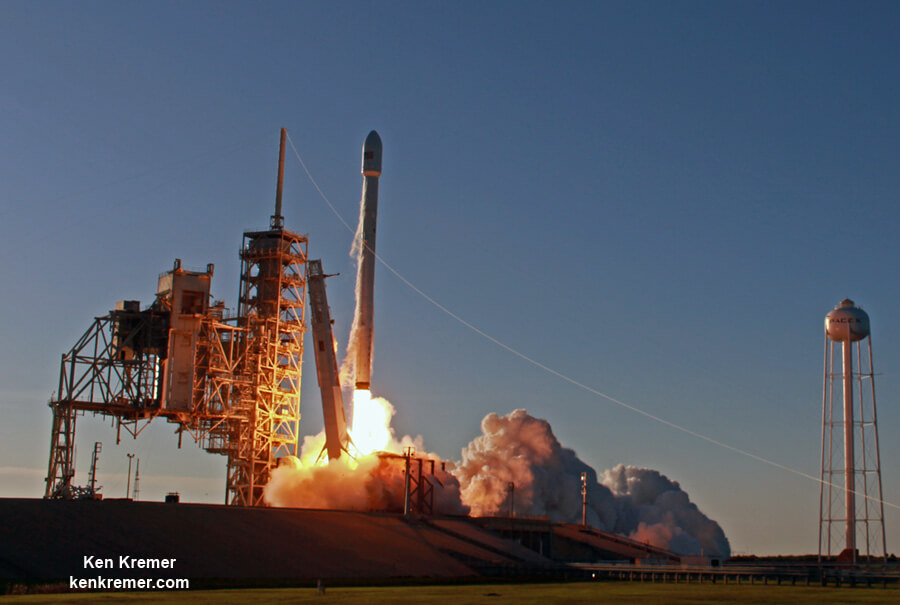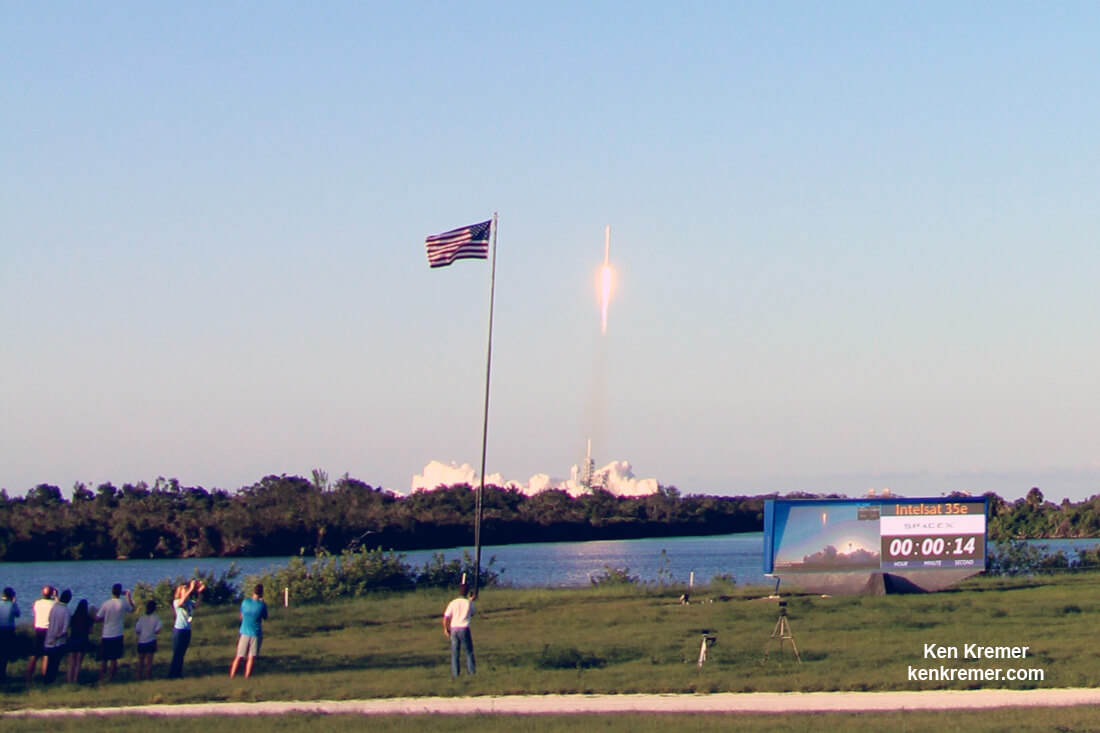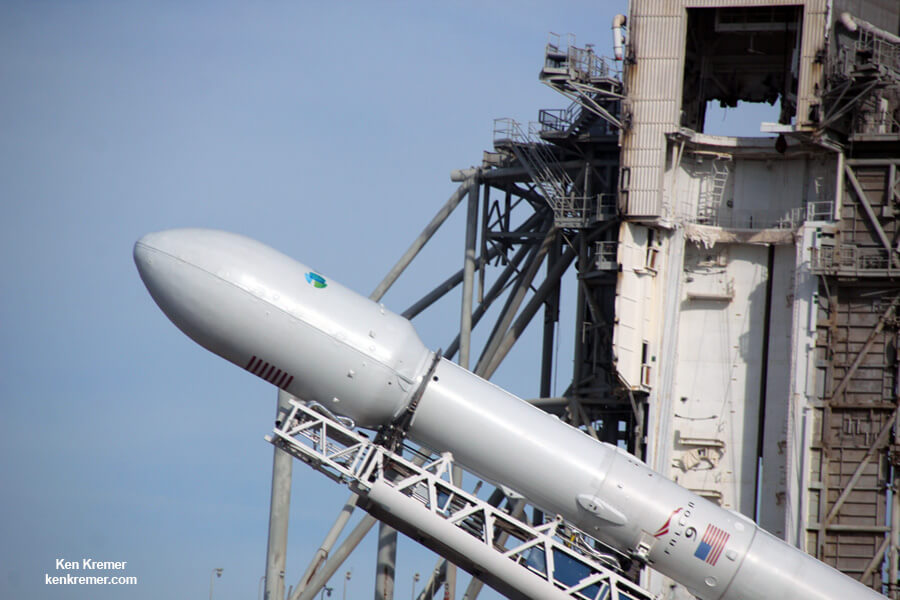
KENNEDY SPACE CENTER, FL – July has begun with SpaceX maintaining a blistering pace of blasting rockets and spaceships flying to space and returning to Earth for a host of multipronged missions furthering NASA science both on the International Space Station (ISS) and beyond, commercial space endeavors in the US and overseas and fulfilling billionaire founder Elon Musk’s dreams of creating reusable rocketry to slash launch costs and advance humanity’s push to the stars.
On July 2, SpaceX conducted the first launch attempt of the Intelsat 35e telecomsat that ultimately culminated with a spectacularly successful launch on the third try on July 5 at dusk that lit up the Florida Space Coast skies.
A Falcon 9 roared off SpaceX’s seaside launch pad 39A at NASA’s Kennedy Space Center in Florida precisely on time at 7:38 p.m. EDT, or 2338 UTC July 5 carrying the massive Intelsat 35e communications satellite for commercial high speed broadband provider Intelsat.
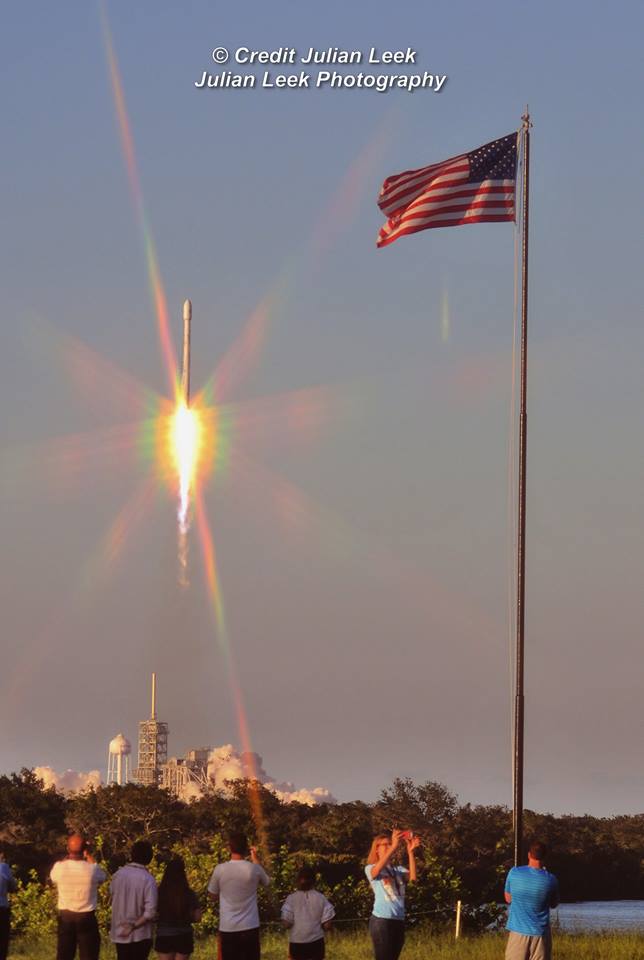
Check out the expanding gallery of eyepopping photos and videos from several space journalist colleagues and friends and myself – for views you won’t see elsewhere.
Click back as the gallery grows !
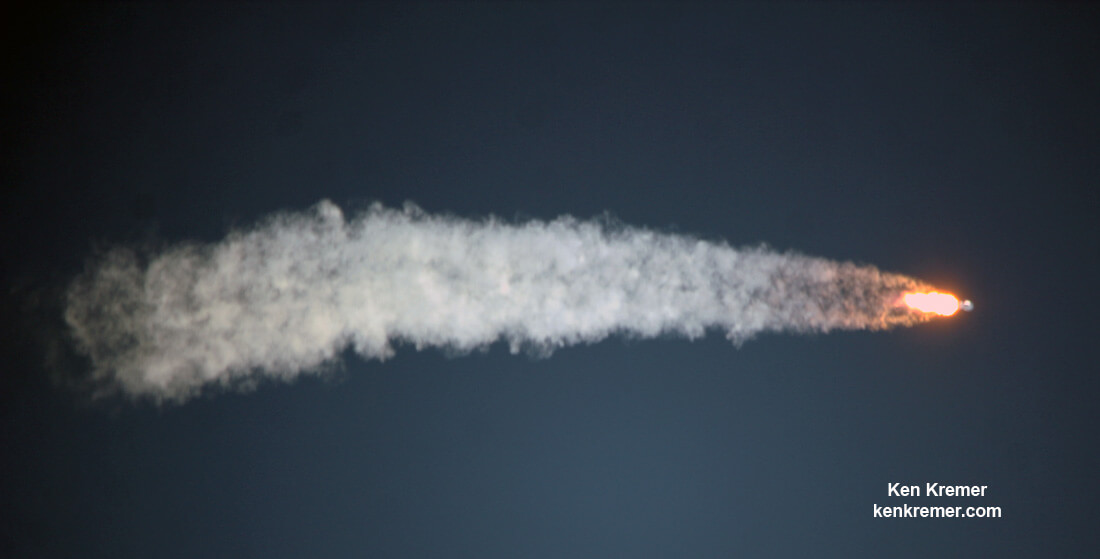
On July 3, the first reflown SpaceX Dragon cargo freighter returned to Earth with a splashdown in the Pacific Ocean after a month-long stay at the International Space Station.
SpaceX contracted ships recovered Dragon from the ocean and hauled it onto deck for return to Port and handover of the science experiments to NASA and teams of research investigators.

The Dragon CRS-11 spacecraft completed the first re-flight mission of a commercial spacecraft to and from the orbiting laboratory.
The gumdrop shaped Dragon spacecrft brought back more than 4,100 pounds of cargo and research samples gathered by members of the stations multinational crews.
Meanwhile, the doubly ‘flight-proven’ SpaceX Falcon 9 booster from the BulgariaSat-1 launch that propulsoively soft landed upright and intact on the sea going OCISLY drone ship hundreds of mile (km) offshore in the Atlantic Ocean sailed back into Port Canaveral.
After berthing in port, technicians removed its quartet of landing legs and lowered it horizontally for transport back to KSC for refurbishment operations.
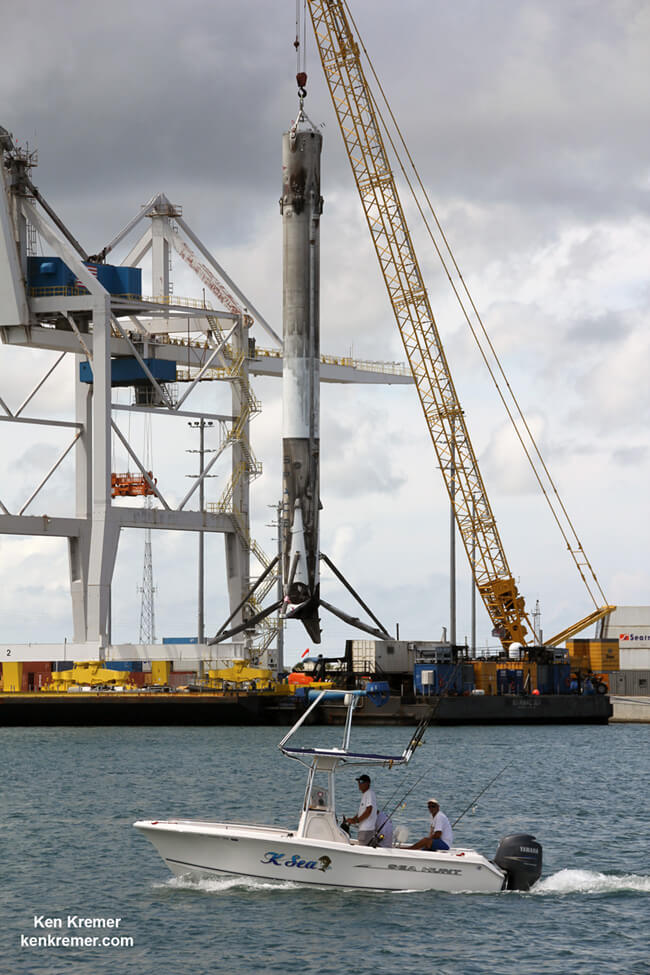
Watch these launch videos:
Video Caption: Falcon 9 launch of the fourth Intelsat EpicNG high throughput satellite built by Boeing on July 5, 2017 from pad 39A at NASA’s Kennedy Space Center in Florida. Credit: Jeff Seibert
Video Caption: Time lapse of SpaceX launch of the Intelsat 35e satellite on a legless Falcon 9 rocket from Pad 39A on July 5, 2017 at NASA’s Kennedy Space Center in Florida. Credit: Jeff Seibert
The first stage was not recovered for this launch because the massive 6800 kg (13000 lb) Intelsat 35e comsat requires every drop of fuel to get to the desired orbit.
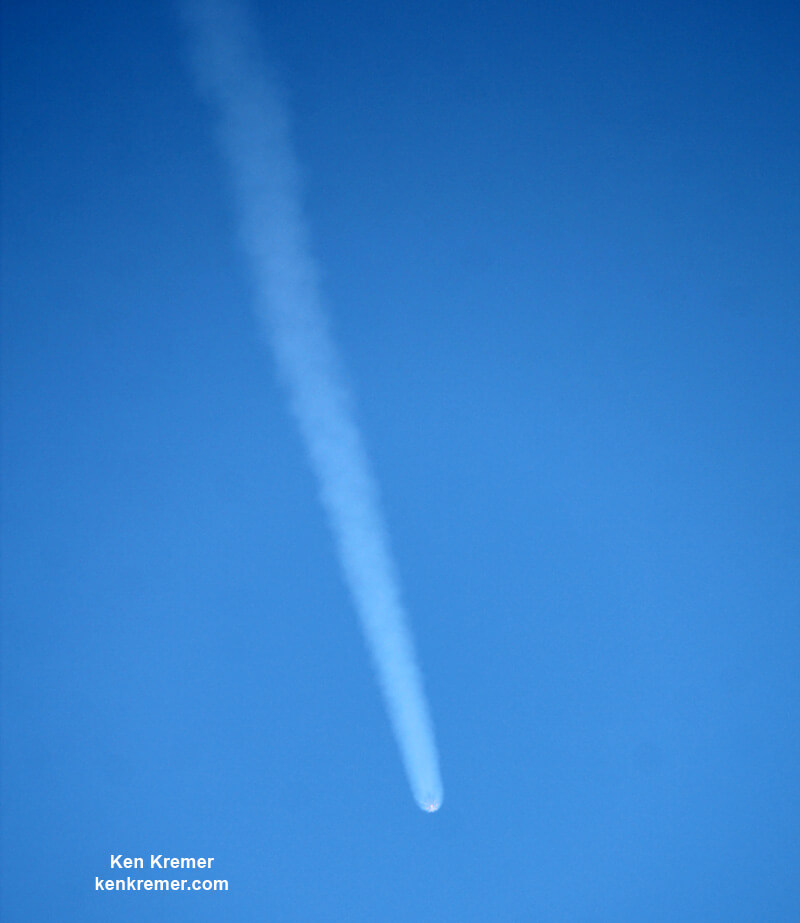
Intelsat 35e marks the tenth SpaceX launch of 2017 – establishing a new single year launch record for SpaceX.
The recent BulgariaSat-1 and Iridium-2 missions counted as the eighth and ninth SpaceX launches of 2017.
Including those last two ocean platform landings, SpaceX has now successfully recovered 13 boosters; 5 by land and 8 by sea, over the past 18 months.
Watch for Ken’s onsite Intelsat 35e and space mission reports direct from the Kennedy Space Center and Cape Canaveral Air Force Station, Florida.
Stay tuned here for Ken’s continuing Earth and Planetary science and human spaceflight news.
